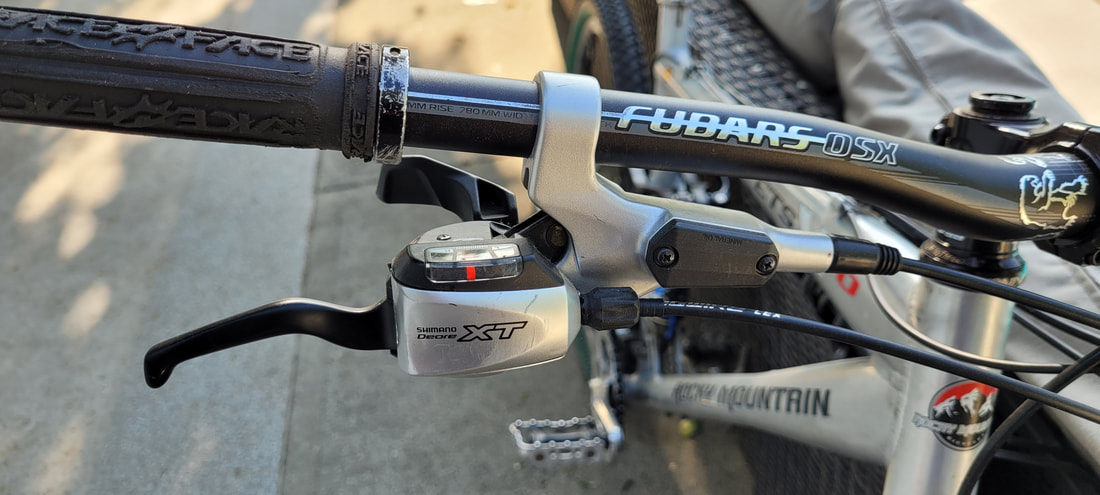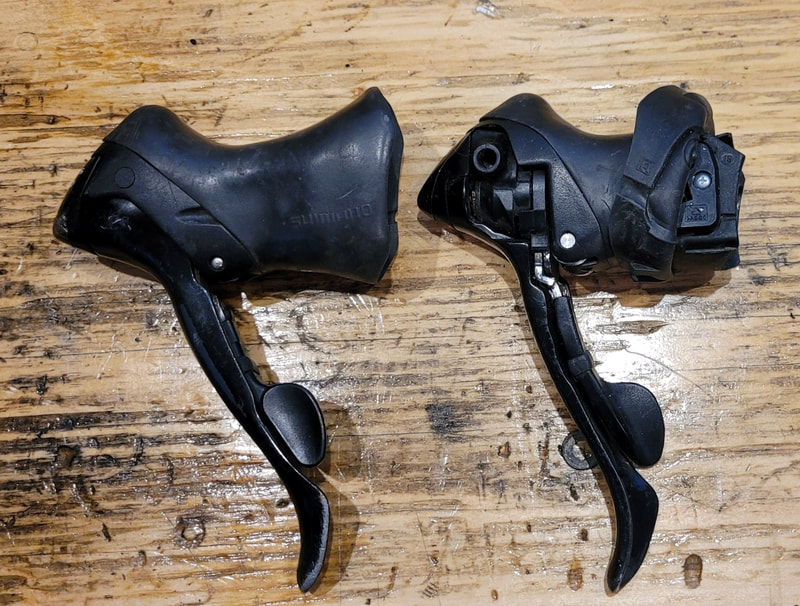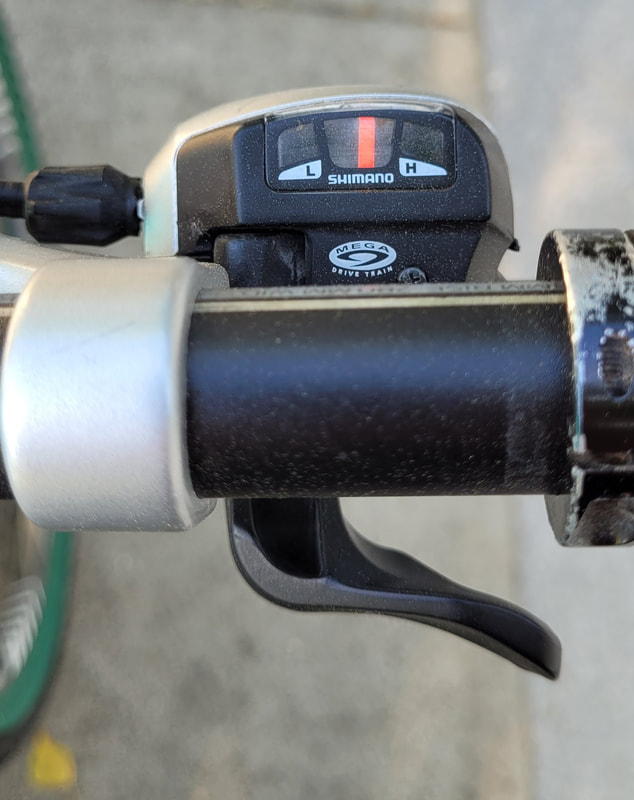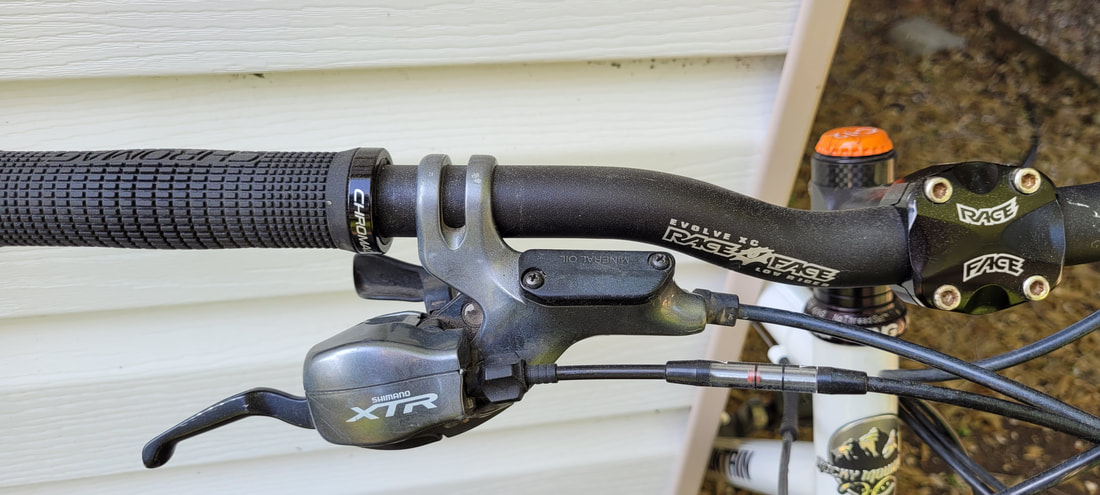A very interesting failure.
Anyone else still remember Steve Bauer losing the gold medal at the '80 Olympics because he missed a shift in the final sprint?
Eventually Shimano decided to extend this philosophy to its MTB shifters, but it took them 12 years to do it, with the M960 XTR group debuting in 2002. Like the road levers, the brake lever was the downshift lever, but unlike the road units, it was also the upshift lever. You pushed it down to upshift, and put your fingers under the lever to push it up to downshift.
This was awkward. Human fingers have little strength going that way. Making a fist - no problem. But un-making a fist? Not so much. To combat this, a thumb paddle was installed on the underside for downshifts. A much more satisfying activity.
Let's discuss 'up' and 'down' shifts quickly, as this will segue into my biggest issue with these shifters. In a car, you start in 1st gear and as you go faster you shift up to 2nd, then eventually 3rd, etc. Going up in this case refers to changing the gear ratio, and getting closer and closer to a ratio of 1:1 as you go up. The ironic thing being that a lower gear ratio is numerically higher, ie 1st gear in a car is 3:1 while 5th might be 0.95:1.
If you apply this same convention to bikes, the rear derailleur's starting gear is 1, and as you pull the cable you drag the chain 'up' towards gear 7 or 8 - the lower ratios. You might notice on these pictures I've posted, there are no numbers though. I think it was maybe a little confusing for new riders to have to figure this out, and instead just learn that far left was 'easy to pedal,' far right was 'hard to pedal.'
The point of all this rambling already?
What also came with the Dual Control mountain levers was something called Rapid-Rise. When Shimano dropped thumbshifters, they took away the ability to slam through the entire cassette in one movement. There would certainly be times when you would turn a corner on a trail to find a steep hill, and you need a low gear NOW, so you just hammered that thumbshifter as far forward as you could. The STI rapidfire levers in 1989 took this ability away, and instead, the best they could do was three downshifts.
Rapid-Rise took this away too. The starting position of the rear derailleur was now the lowest gear ratio on the cassette. So if you desperately needed a low gear for the hill you didn't know was there, you had to spam that downshifter. Click click click click and hope for the best. And also consider this was the awkward pushing up on the brake lever.
But what we got instead was the ability to slam through three gears shifting up. Something that really didn't seem valuable at all. The heavy spring on the derailleur made the shifts sure, but just slamming down on the brake lever just feels like the motion you should be making to get a bail out gear in an emergency.
I wouldn't know about their strength - I haven't used them enough to say for sure, but I don't remember them coming back broken when I worked at a shop in the early 2000s. Also, braking and shifting at the same time was kinda the whole point of them, so that complaint just doesn't make sense. I think ultimately the biggest issue was just the totally different motions needed to shift vs. the previously popular underbar rapidfire shifters.
I like them generally, apart from the Rapid-Rise action. I'd really like to get a regular derailleur to see how that works. It would certainly fit better with what my brain wants the shifters to do.





 RSS Feed
RSS Feed
